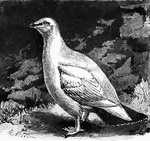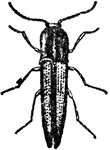
Click Beetle
"Springing Beetles, Elateridae, are narrower and more elongate than the former, and their legs are so…
Chinese Paddlefish
A fish with an extended snout far beyond its mouth. Grows up to 18 feet in length.

Sand Grouse
Birds with pigeon like heads and necks. their body is compact and sturdy. Has a leathery down on their…

Lapland Pulk
A small canoe shaped "boat" made of light materials and covered in reindeer skin. It is drawn by a single…
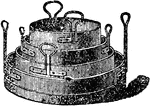
Set of Sieves
"Close to the place where the dredge is emptied there ought to be a tub about 2 feet in diameter and…

Torsion Balance
"ABCD is a cylinder of glass 1 foot in diameter and 1 foot high. This cylinder is closed by a glass…

Brick Retort
"These brick retorts are 9 feet long and with diameters of 22 and 13.5 inches, set four in an oven to…
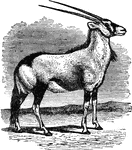
Gemsbok
"A species of antelope, abounding on the dry yet fertile plains of South Africa, where it feeds on the…

Puteli
A broad flat bottom boat, used for transporting the products of India down the Ganges. It is from 40…
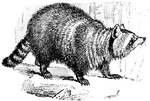
Racoon
An animal about two feet long, stout body, bushy ringed tail, short limbs, pointed ears, broad face,…

Horse Foot
"Successive stages of modification of the feet of extinct forms of horse-like animals, showin gradual…

Horse Foot
"Successive stages of modification of the feet of extinct forms of horse-like animals, showin gradual…

Horse Foot
"Successive stages of modification of the feet of extinct forms of horse-like animals, showin gradual…
Horse Foot
"Successive stages of modification of the feet of extinct forms of horse-like animals, showin gradual…
Horse Foot
"Successive stages of modification of the feet of extinct forms of horse-like animals, showin gradual…

Ladds's Boiler
"A horizontal tubular, which is found to be extremely powerful as well as economical. It is a rectangular…
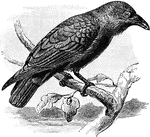
Raven
A bird with black plumage with a metallic sheen, the bill and feet are ebony black, the wings pointed…
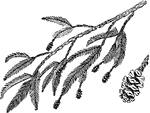
Redwood Branch
A Californian timber tree. Grows 200 to 300 feet high and have a thick cinnamon colored bark. The inside…
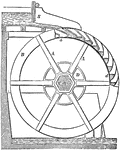
Water Wheel
"When a water fall ranges between 10 and 70 feet, and the water supply is from 3 to 25 cubic feet per…
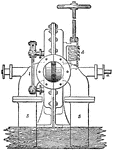
Reaction Turbine
"Professor James Thomson's inward flow or vortex turbine has been selected as the type of reaction turbines.…
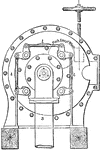
Reaction Turbine
"Professor James Thomson's inward flow or vortex turbine has been selected as the type of reaction turbines.…
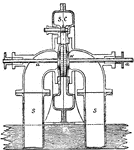
Reaction Turbine
"Professor James Thomson's inward flow or vortex turbine has been selected as the type of reaction turbines.…
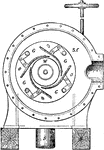
Reaction Turbine
"Professor James Thomson's inward flow or vortex turbine has been selected as the type of reaction turbines.…
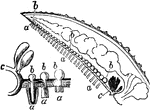
Ambulacra
"Ambulacra of Star-fish, As seen in a longitudinal and vertical section of one of the rays; and three…
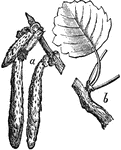
Aspen
"A tree which grows plentifully in Europe and in Siberia. It is a native of Britain, and is frequent…
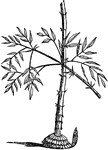
Bamboo
"A genus of grasses, of which most of the species attain a great size, many of them 20 or 30 feet, some…
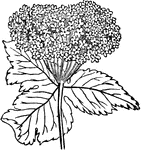
Cow Parsnip
"A genus of plants of the natural order Umbelliferae, having petals bent in at the middle, and flat…

Dragon Tree
"A tree of the natural order Liliaceae, remarkable for the size which it sometimes attains, rivalling…

Ocelot
"A digitigrade carnivorous mammal of the cat kind, peculiar to the American continent. It attains a…

Blast Furnace
A blast furnace measuring 42 feet high and 15 feet across that contains 4356 cubic feet of space.

Blast Furnace
A blast furnace measuring 47.5 feet high and 16.5 feet across that contains 6174 cubic feet of space.

Blast Furnace
A blast furnace measuring 55 feet high and 16 feet across that contains 7175 cubic feet of space.

Blast Furnace
A blast furnace measuring 58 feet high and 17 feet across that contains 8000 cubic feet of space.

Blast Furnace
A blast furnace measuring 60 feet high and 20 feet across that contains 12778 cubic feet of space.
Blast Furnace
A blast furnace measuring 75 feet high and 16.5 feet across that contains 11983 cubic feet of space.

Blast Furnace
A blast furnace measuring 80 feet high and 20.5 feet across that contains 15500 cubic feet of space.
Blast Furnace
A blast furnace measuring 95.5 feet high and 16 feet across that contains 15050 cubic feet of space.
Blast Furnace
A blast furnace measuring 95.5 feet high and 22 feet across that contains 25940 cubic feet of space.
Blast Furnace
A blast furnace measuring 95.5 feet high and 24 feet across that contains 28950 cubic feet of space.

Blast Furnace
A blast furnace measuring 85 feet high and 25 feet across that contains 26000 cubic feet of space.

Blast Furnace
A blast furnace measuring 90 feet high and 30 feet across that contains 41149 cubic feet of space.

Ferrie's Furnace
"A peculiar furnace, known as Ferrie's self-coking furnace after the name of its inventor, in which…
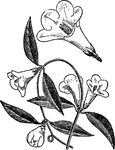
Gelsemium
"The plant known in America as the "Carolina jasmine" is not a true jasmine. other hardy species commonly…

Center of Gravity
"Why does a person carrying a weight upon his back stoop forward? In order to bring the center of gravity…

Center of Gravity
"Why does a person carrying a weight upon his back stoop forward? In order to bring the center of gravity…

Lifeboat
"Ten-Oared Lifeboat. the 33-feet, double-banked, ten-oared, self-righting, and self-emptying lifeboat…
Lifeboat
"Sheer Plan of a Ten-Oared Lifeboat. the 33-feet, double-banked, ten-oared, self-righting, and self-emptying…
Lifeboat
"Deck Plan of a Ten-Oared Lifeboat. the 33-feet, double-banked, ten-oared, self-righting, and self-emptying…

Mountain Rupture
"Rupture of a Mountain.—There is no doubt, but in the operations of nature, great effects are…
Barometer
"Suppose a to be a long tube, with the piston b so nicely fitted to its inside, as to work air tight.…
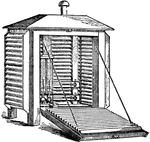
Thermometer Box
"Stevenson's louvre-boarded box for the thermometers, which is now very widely used for temperature…
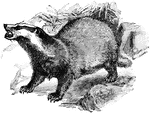
European Badger
About two feet in length of a heavy and clumsy shape, short legs, and short thick tail. Its fur is commonly…

Angular Perspective
The perspective in this plate is "angular perspective," and the figure it represents is a flat square…
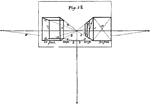
Parallel Perspective
Two upright oblong figures are here represented in parallel perspective. They may be imagined to resemble…

Angular Perspective
This object is a cube, having therefore all its faces of equal dimensions; and as both sides recede,…

Angular Perspective
This cube has four additional cubes of equal dimensions. This is effected by first drawing the cube…
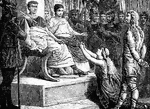
Caractacus And Claudius
Caractacus was a British Chief that had fought very bravely against the Romans. He was brought to Rome…
